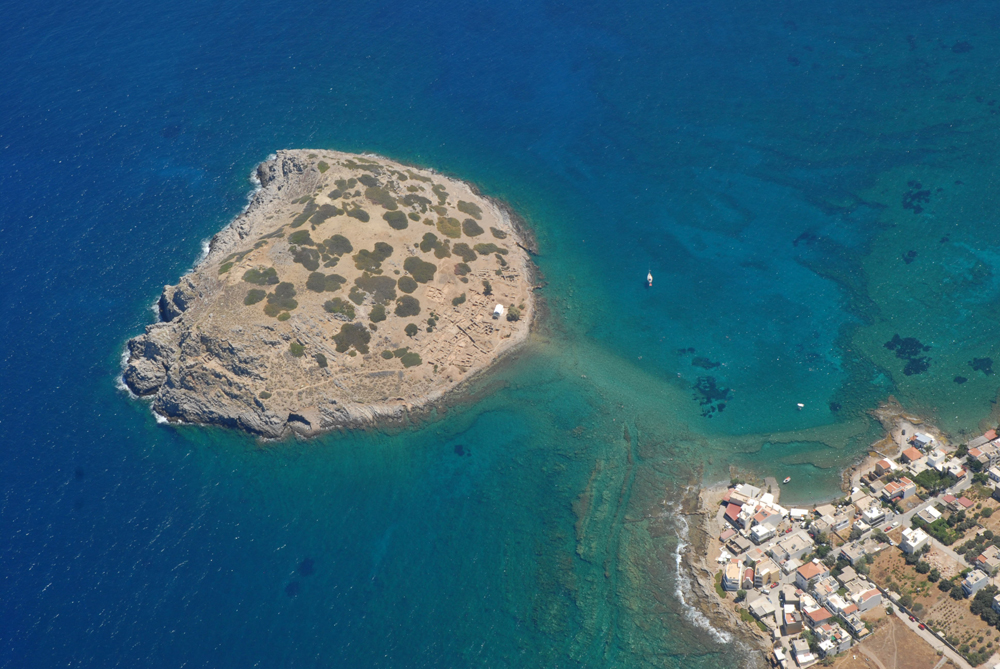
Extensive excavations have been conducted on the islet of Mochlos and the adjacent plain in eastern Crete, first by Richard Seager in 1907–1908 and later as a joint Greek-American campaign (synergasia) under the direction of Jeffrey Soles and Costis Davaras, beginning in 1989. These investigations have revealed evidence of occupation throughout the Bronze Age (c. 3100–1200 B.C.), as well as in the Archaic, Late Classical, Late Hellenistic, and Early and Middle Byzantine periods.
Evidence of scattered houses, as well as obsidian blade production, has been recovered from the island in levels dating to the early Prepalatial period, and the earliest material may date to the Final Neolithic. By Early Minoan (EM) II–III, however, the island settlement had become a large village with houses, streets, and workshop areas for manufacturing gold jewelry, stone vases, and obsidian blades. An associated cemetery of built house tombs (EM IIA–Middle Minoan [MM] IA)—as well as pithos burials, rock shelters, and simple pit graves—was excavated on the western side of the island. Two monumental tombs (I-II-III and IV-V-VI) are noteworthy for their size, architectural details, relative isolation, and symbols of rank, including gold diadems and a silver vessel; the tombs may belong to chiefly families in the community.
Settlement continued on the island in the Protopalatial period, though perhaps on a smaller scale, as indicated primarily by pottery deposits and the continued use of some tombs. Although the evidence is limited, a Syrian cylinder seal, a silver vessel, and imported pottery suggest that the site continued to be a major port at this time.
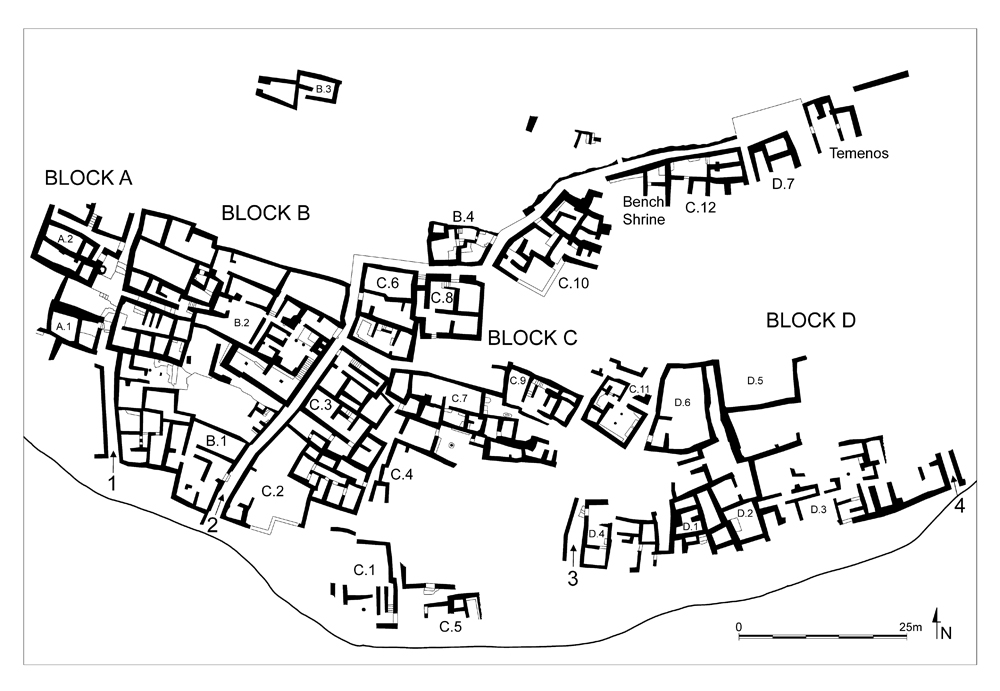
An extensive Neopalatial settlement existed both on the island as well as south of the modern village of Mochlos; the two areas were connected by a narrow isthmus throughout the Bronze Age (as seen under water in the photo). The town was laid out with distinct blocks of houses separated by paved or bedrock streets, perhaps as early as MM IIIA, though the preserved architecture on site dates mostly to Late Minoan (LM) IB. One of the best preserved houses, C.3 (the House of the Metal Merchant), contained two metal hoards of bronze tools and copper ingots and a large number of storage jars. The largest building on site, B.2, appears to have had special functions and may have served as a ceremonial center, manor house, or villa. The southeastern wing was constructed of ashlar sandstone masonry and contained a Minoan Hall with two pillar crypts on the ground floor.
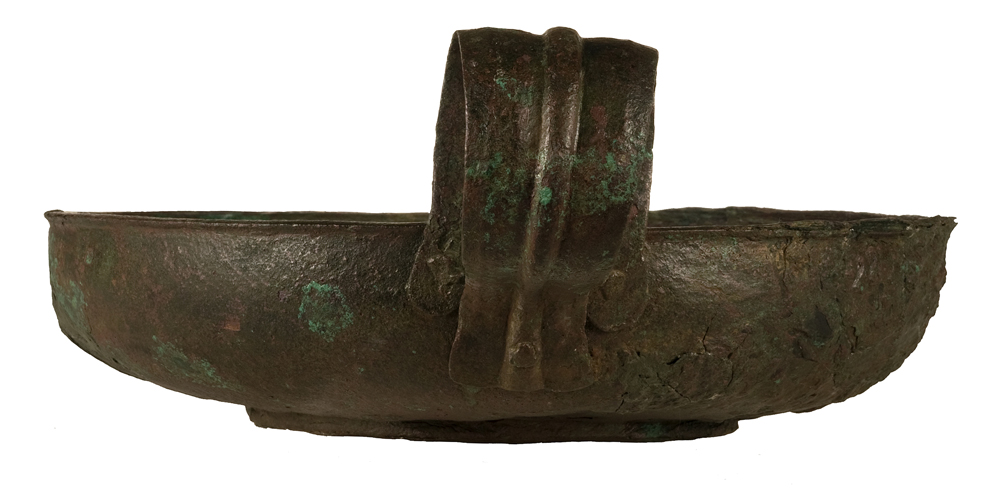
Immediately west of Building B.2 lay House A.2, which contained an elaborate ivory box with jewelry thought to belong to a Minoan priestess (now on display in the Siteia Museum).
Associated with the town were two LM IB buildings uncovered in the Artisans’ Quarter on the mainland at the southwestern edge of the modern village; these structures preserved evidence for the production of ceramics, textiles, bronze objects, stone vases, and ivory pieces.

Also dating to this period is a small LM IB farmhouse at Chalinomouri at the eastern end of the Mochlos coastal plain.
The town of Mochlos was destroyed in LM IB and reoccupied on a much reduced scale in LM II/IIIA:1–IIIB. The small houses in this period were scattered, and the town was not provided with paved streets. Associated with this settlement is a cemetery south of the modern town (at Limenaria), which included 30 chamber tombs.

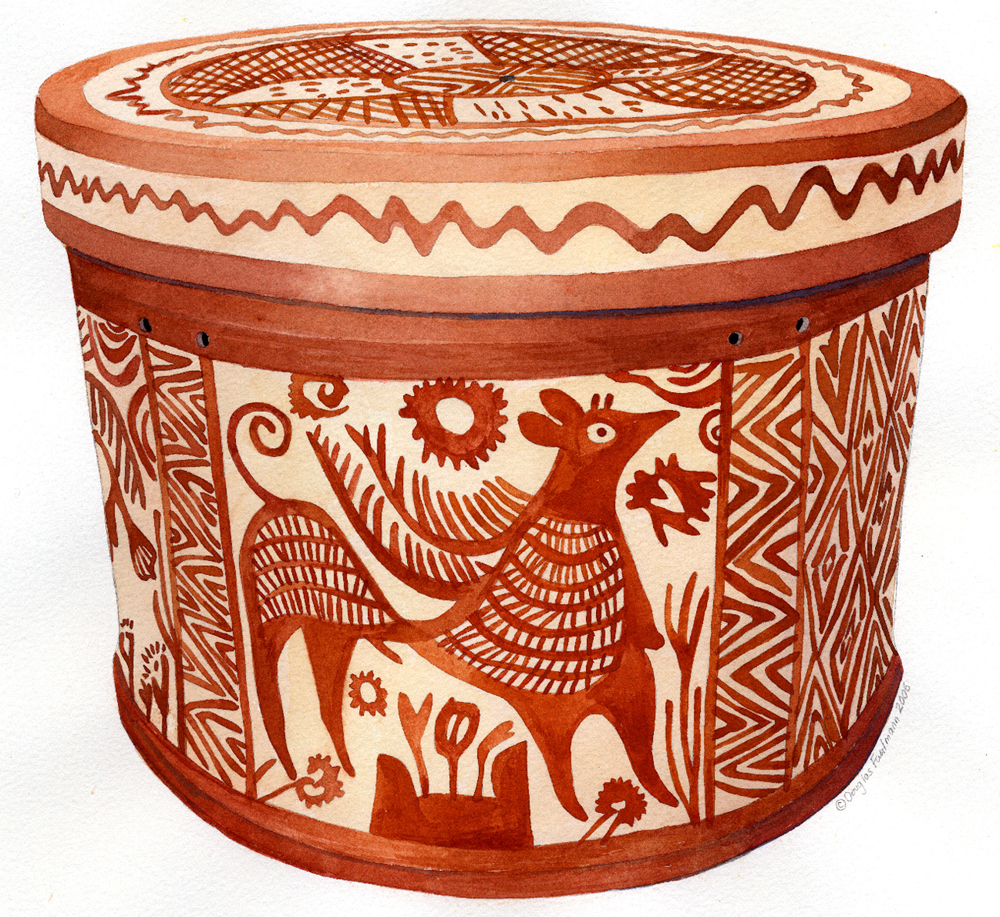
There is also evidence for small-scale habitation on the summit of the islet in the 7th and late 5th centuries B.C. A more extensive settlement was built in the Late Hellenistic period (1st c. B.C.) on the southern slope above the earlier Bronze Age town; it included an eight-room industrial building (the so-called Beam Press Complex) for olive oil and possibly wine production.
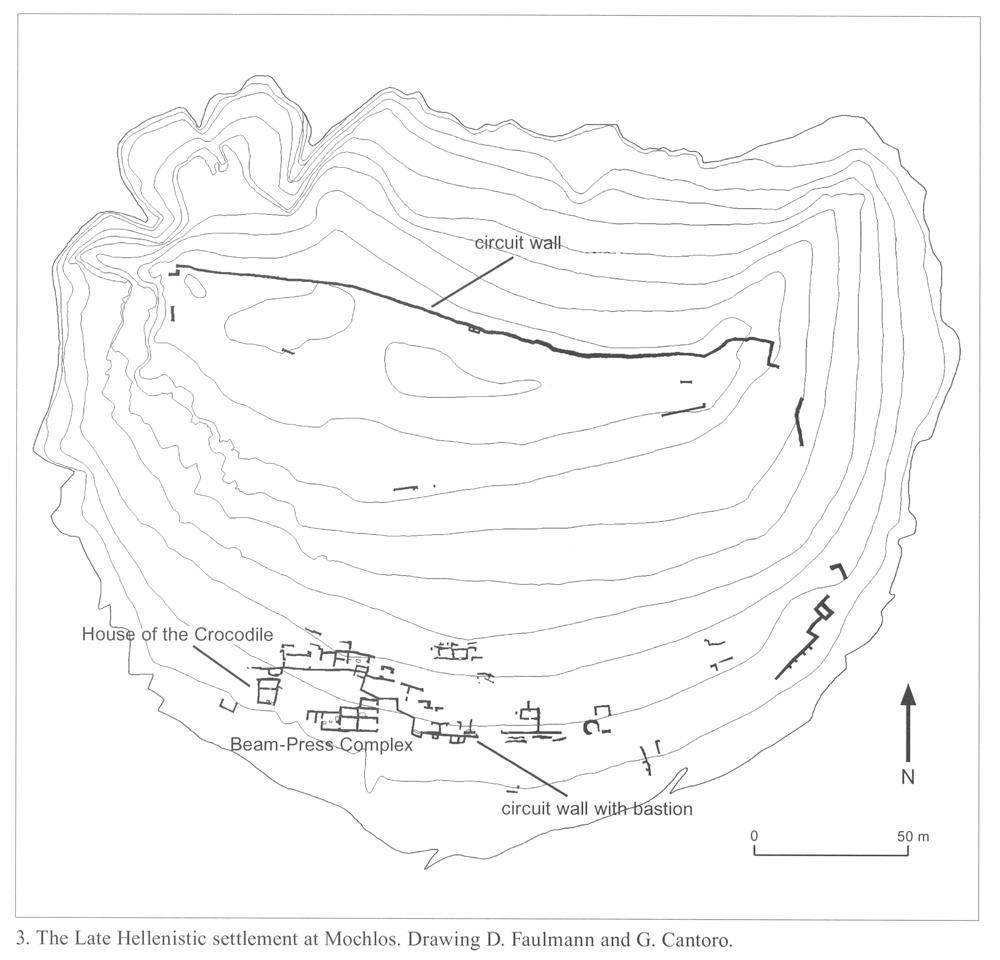
Finally, a small farmstead was built in the Early Byzantine period near the shore and the modern church of St. Nikolas, while the summit of the island was reoccupied in the Middle Byzantine period.
Today the island can be visited by boat from the village of Mochlos, and there are informational signs on site. The Artisans’ Quarter is located next to a parking lot at the southwestern edge of town where there are more informational signs. The LM III cemetery is located approximately 200 m to the south of the Artisans’ Quarter, while the farmhouse at Chalinomouri is located about 3.5 km to the east of the village of Mochlos. A field road leads most of the way to the site (unsigned), but the site itself must be accessed on foot.












Slide show from left to right (click on each photo to enlarge): five images of work on site and seven more showing the study and illustration of pottery, jewelry, and architecture from the Minoan town. Photos by Ch. Papanikolopoulos and drawings by D. Faulmann.
Selected References
Barnard, K.A., and T.M. Brogan. 2003. Mochlos IB: Period III. Neopalatial Settlement on the Coast: The Artisans’ Quarter and the Farmhouse at Chalinomouri. The Neopalatial Pottery (Prehistory Monographs 8), Philadelphia.
Seager, R.B. 1909. “Excavations on the Island of Mochlos, Crete, in 1908,” AJA 13, pp. 273–303. DOI: 10.2307/497023.
———. 1912. Explorations in the Island of Mochlos, Boston and New York.
Smith, R.A.K. 2010. Mochlos IIB: Period IV. The Mycenaean Settlement and Cemetery: The Pottery (Prehistory Monographs 27), Philadelphia.
Soles, J.S. 1992. The Prepalatial Cemeteries at Mochlos and Gournia and the House Tombs of Bronze Age Crete (Hesperia Suppl. 24), Princeton.
———. 2003. Mochlos IA: Period III. Neopalatial Settlement on the Coast: The Artisans’ Quarter and the Farmhouse at Chalinomouri. The Sites (Prehistory Monographs 7), Philadelphia.
———. 2008. Mochlos IIA: Period IV. The Mycenaean Settlement and Cemetery: The Sites (Prehistory Monographs 23), Philadelphia.
Soles, J.S., and C. Davaras. 1992. “Excavations at Mochlos, 1989,” Hesperia 61, pp. 413–445. DOI: 10.2307/148233.
———. 1994. “Excavations at Mochlos, 1990–1991,” Hesperia 63, pp. 391–436. DOI: 10.2307/148208.
———. 1996. “Excavations at Mochlos, 1992–1993,” Hesperia 65, pp. 175–230. DOI: 10.2307/148456.
Soles, J.S., C. Davaras, J. Bending, T. Carter, D. Kondopoulou, D. Mylona, M. Ntinou, A.M. Nicgorski, D.S. Reese, A. Sarpaki, W.H. Schoch, M.E. Soles, V. Spatharas, Z.A. Stos-Gale, D.H. Tarling, and C.Witmore. 2004. Mochlos IC: Period III. Neopalatial Settlement on the Coast: The Artisans’ Quarter and the Farmhouse at Chalinomouri. The Small Finds (Prehistory Monographs 9), Philadelphia.
Soles, J.S., J. Bending, T.M. Brogan, K. Caldwell, T. Carter, A. Giumlia-Mair, K. Kopaka, D. Mylona, A. Nicgorski, M. Ntinou, D.S. Reese, G. Rethemiotakis, R.A.K. Smith, S.L. Smith, M.E. Soles, S. Triantaphyllou, and P. Westlake. 2011. Mochlos IIC: Period IV. The Mycenaean Settlement and Cemetery. The Human Remains and Other Finds (Prehistory Monographs 32), Philadelphia.
Vogeikoff-Brogan, N. 2014. Mochlos III: The Late Hellenistic Settlement. The Beam-Press Complex (Prehistory Monographs 48), Philadelphia.
For further information, see articles in Kentro 1, Kentro 2, Kentro 3, Kentro 7, Kentro 8, Kentro 9, Kentro 10, Kentro 12, Kentro 13, Kentro 14, Kentro 15, Kentro 16, Kentro 17, Kentro 19, Kentro 19, Kentro 20.
